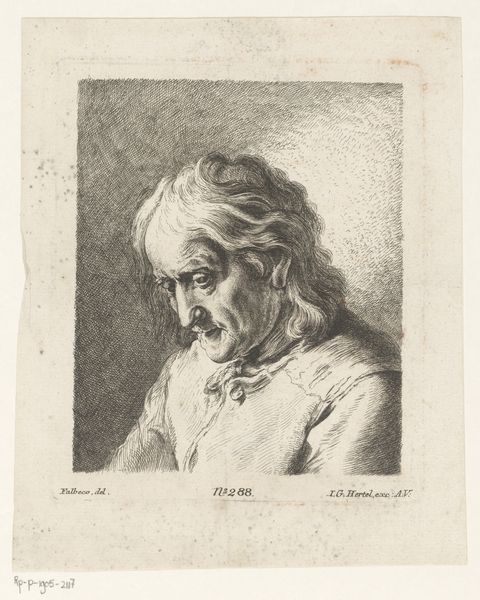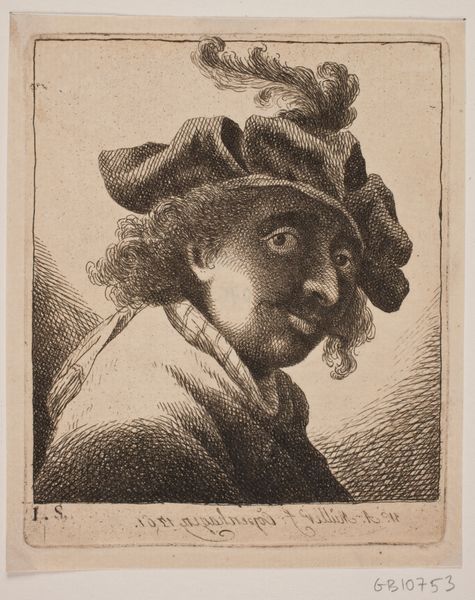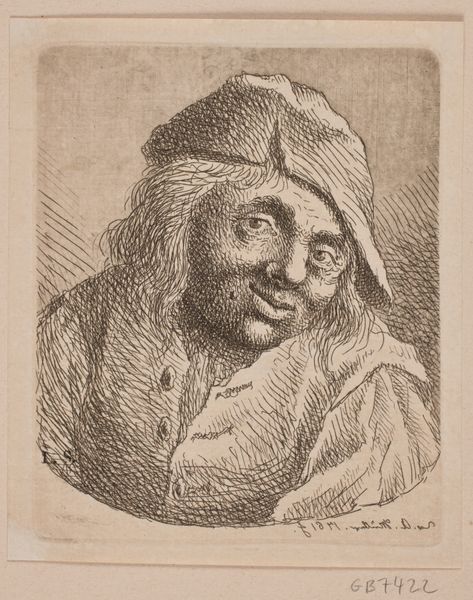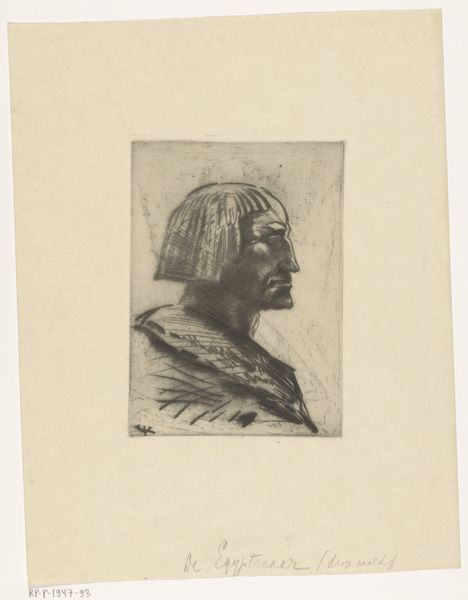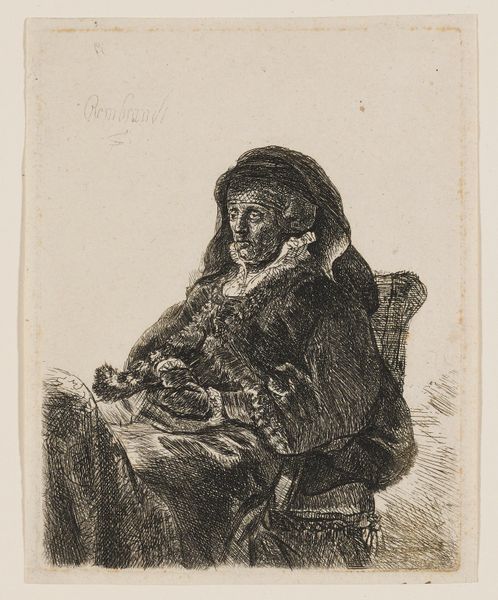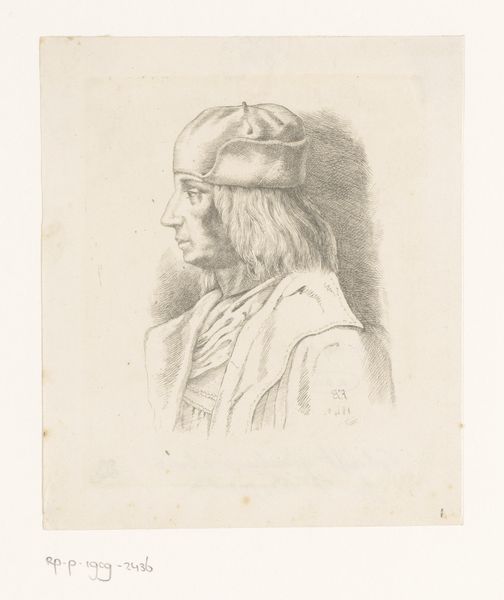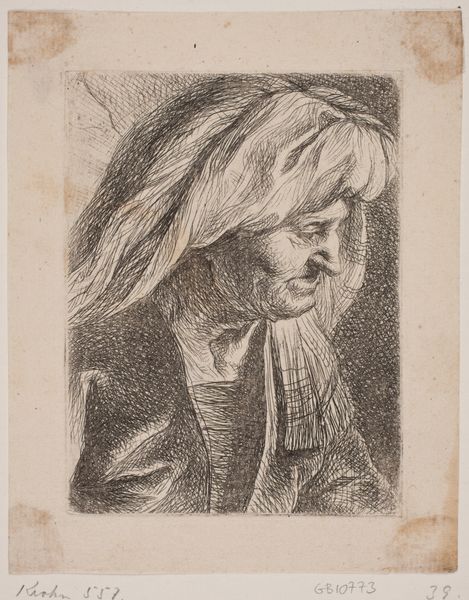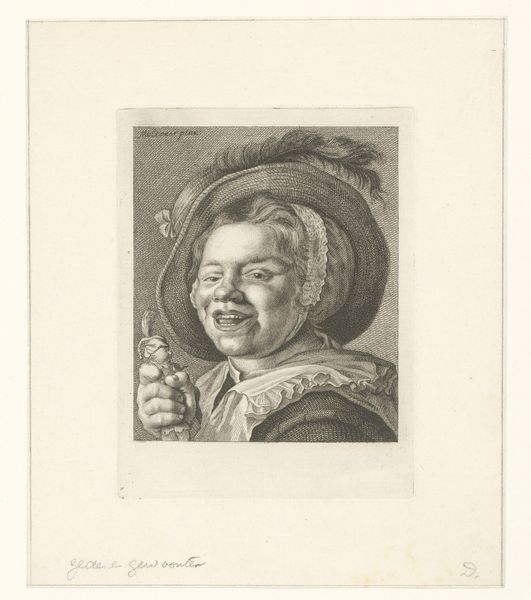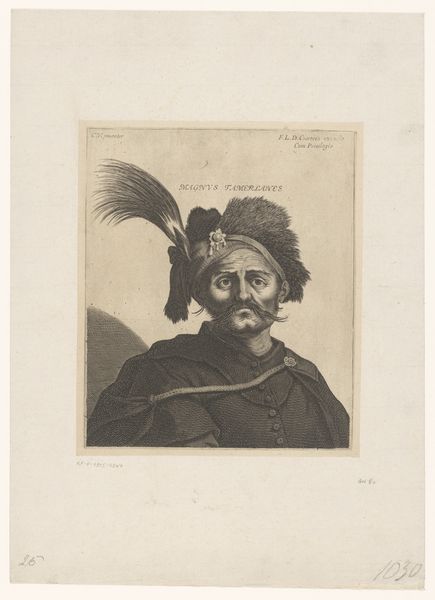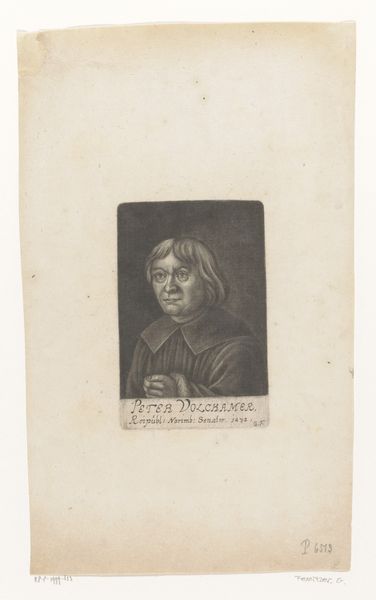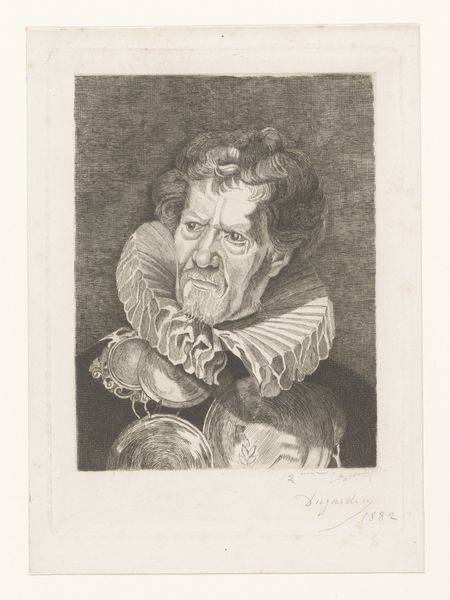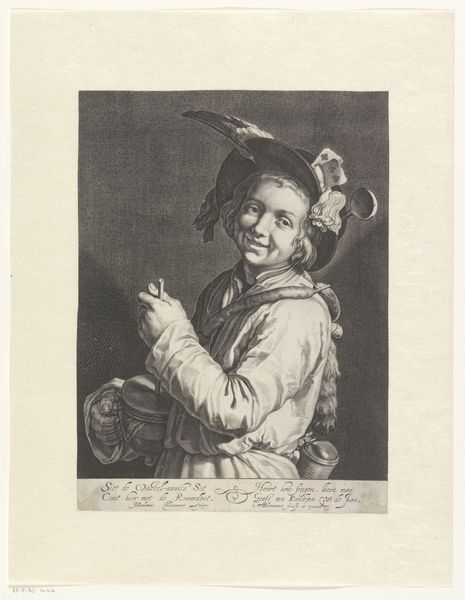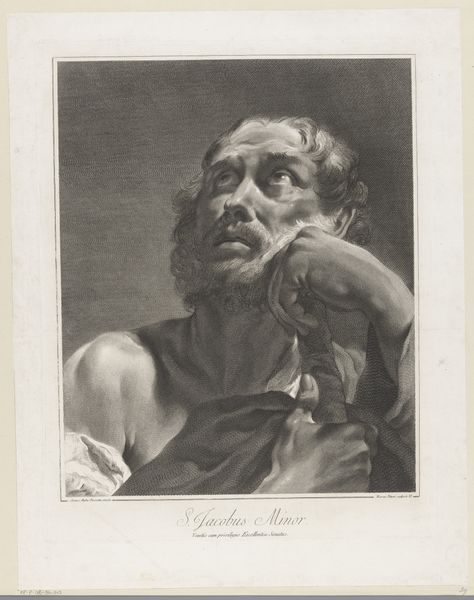
print, engraving
#
portrait
#
baroque
# print
#
history-painting
#
engraving
Dimensions: height 222 mm, width 185 mm
Copyright: Rijks Museum: Open Domain
Curator: The piece before us, currently housed in the Rijksmuseum, is entitled "Portret van Paracoussi," created sometime between 1615 and 1647. The portrait, produced by Jérôme David, takes the form of an engraving, capturing the likeness of what seems to be an historical figure. Editor: There’s an unsettling intensity about this man's gaze. It’s both direct and oddly evasive, heightened by the sharp lines and almost grotesque detailing. There's also something unsettling in his smile. I’d describe it as… almost mocking. Curator: Absolutely, and considering Paracoussi was a Carib chief known for his resistance against European colonization in the Americas, that sharp gaze could indeed reflect defiance, power, but also the looming sense of doom for his people, as Baroque art frequently served the purposes of projecting power and also communicating specific narratives. Editor: That makes sense. And this "REX PLATTE" below his name is probably an allegorical comment on his Kingship or position within his people, I imagine. Notice the rough textures defining the skin – you feel the wear of his experiences marked on his face. And what do you make of this shield? The depiction looks off – almost limp and useless in contrast with his direct gaze. Curator: Indeed, it does. Its symbolic potential outweighs any sense of literal representation, perhaps indicating both vulnerability and strategic shrewdness; considering his context within colonial history, it's easy to imagine the "REX PLATTE" comment reflecting more than simple acknowledgement of status, but an association of foreign powers with those perceived as leaders and 'kings'. Editor: So much conveyed through carefully etched lines! What strikes me, though, is the potential tension for period audiences interpreting this portrait – the conflicting symbols and the penetrating stare… it couldn’t have been a simple celebration of a historical leader. Curator: Quite. Art often becomes a stage for historical dialogue – layered with the values and perceptions of both creator and subject. Jérôme David's engraving immortalizes more than just a face. Editor: It's a challenge to contemporary interpretation as well—a reminder of the complexities inherent in portraiture of the era. Curator: Precisely. A perfect illustration of how visual art becomes cultural memory, urging us to consider the psychology and politics intertwined within a single image.
Comments
No comments
Be the first to comment and join the conversation on the ultimate creative platform.
